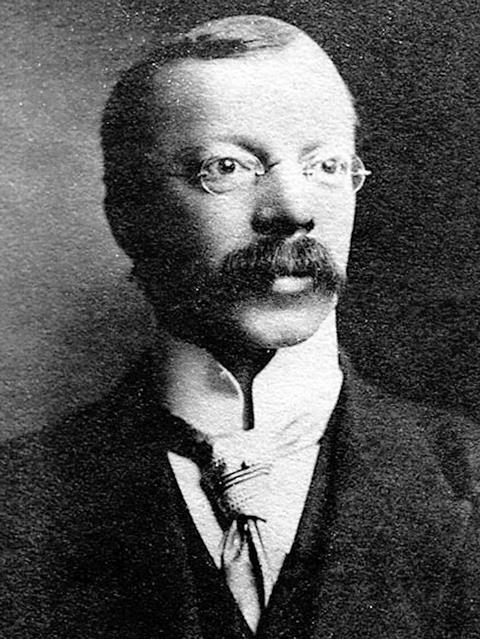
In so far as lawyers ever enjoyed ‘celebrity’, the late Victorian and Edwardian era now brings to mind the stars of the bar – men like FE Smith who mixed their practice with political careers where their abilities in oral debate took centre stage.
But in his 1939 memoir, These Meddlesome Attorneys, London solicitor Edward A. Bell dedicates a chapter to the ‘Famous solicitors’ of that time.
The picture that emerges is of a world where successful solicitors found ways of standing out – through taking clients and cases that had extensive media coverage, acquiring personal eccentricities, and for some through direct dealings with the press. Some, though, faced legal problems of their own.
First mentioned is George Lewis, known to Bell’s own father, who had thrived after making his reputation in an eye-catching case. It earned Lewis some legal celebrity, which he maintained and profited from.
‘His first notorious case,’ Bell writes, ‘was the prosecution of certain bank directors in which he appeared, without counsel, before the Lord Mayor at Mansion House.’ Up against well-known counsel for the directors, Lewis succeeded in getting them committed for trial.
The jury at trial acquitted the directors, but as Bell notes, ‘the notoriety of this case brought success. Thereafter until Lewis’s death his firm appeared in nearly every “star” case.’ He was particularly in demand for divorce and libel cases. ‘Professional rivals were jealous of his immense success, but it must, however, be said of him that he was gentle with young practitioners who had to appear against him’.
Lewis joined the Law Society Council, but according to Bell was on the losing side of its deliberations so often that he resigned. But when the Law Society’s new wing was opened by Edward VII, it was Lewis whom the king picked out from the assembled professional crowd for a chat.
A solicitor could also gain fame for prosecuting official corruption. Michael Abrahams, Bell writes, ‘unstabilized the detective force in Chief Inspector Williamson’s time, bringing charges of corruption against certain very celebrated members of the force in connection with… turf [betting] frauds’. The year was 1877 and the police officers in question had taken bribes for ‘affording information’ that allowed the fraudsters, Benson and Kerr, to evade justice.
Abrahams was himself suspended from practice by the Law Society over suspicion of taking bribes for voting for (alternately) the liquidator or trustee in bankruptcy proceedings in which he was acting. But with his suspension spent, he built a ‘considerable’ City practice acting for Stock Exchange and banker clients.
In fact, a solicitor could cut a relatively flamboyant figure in the City. By the 1880s, Sir Frank Crisp had a ‘whole mansion’ office, in which his private room was of ‘vestry hall dimensions’. ‘Sir Frank was known to his clients as a man of no hesitation,’ Bell recalls. ‘Never would he descend to the uncertainty of “I am inclined to the opinion”.’ Instead, ‘it was his custom to tell his clients “It is so”.’
Spanning the Victorian and Edwardian eras, crime solicitor Arthur Newton had ‘considerable notoriety’. Newton ‘always appeared in police court hearings wearing kid gloves’, and his private room was lined with cigar cabinets, organised by brands that Newton matched to the degree of his clients’ ‘legal adversity’.
Long before solicitors could advertise and market their services, solicitors like Newton had strong personal brands. ‘Murder is always a good advertisement for a police court solicitor,’ Bell points out, recalling Newton’s clerk ‘Novissimo’ who won Newton instructions by ‘cell lobbying’ some of the solicitor’s ‘notorious “murder” patrons’.
One case in particular, murder trial ‘the Moat Farm mystery’, was a newspaper sensation. Newton’s client was hanged for the murder of his ‘paramour’, but the case did the solicitor’s practice good. ‘He was accessible to the newspapers during and after his sensational defences,’ Bell notes. It was through his journalist contacts that Newton was ‘enabled to defend’ Dr Crippen.
Later, Newton in turn found himself in the dock, on trial for misappropriating the funds of an Austrian count. He conducted his own defence, was found guilty, and served three years’ penal servitude. Unable to practise, he became a ‘fashionable private enquiry agent’ and marriage broker on his release. On his death, the press gave an extensive and favourable account of his life.
More low-key, but still well known as a crime solicitor, was Freke Palmer, nickname ‘Freekie’. His cases earned him mentions in the satirical magazine Punch. ‘Palmer, during his career,’ Bell writes, ‘had the cream of the London criminal practice, succeeding George Lewis when Lewis became established in divorce.’ Palmer had a way of impressing magistrates, as Bell recalls: ‘When he had, or thought he had made a good point he would stand erect, fold his arms, look steadfastly at the magistrate, and his aspect seemed to imply the words: “Gainsay me if you can”.’
The Victorian and Edwardian periods were, by Bell’s account, anything but staid times for the profession’s best known solicitors. Much more than a century before lawyers thought in terms of marketing departments, business development activities and ‘search engine optimisation’, many found ways to grow their practice through a keen sense of brand and clever publicity.
Edward A. Bell, These Meddlesome Attorneys, was published by Martin Secker, London in 1939





































No comments yet